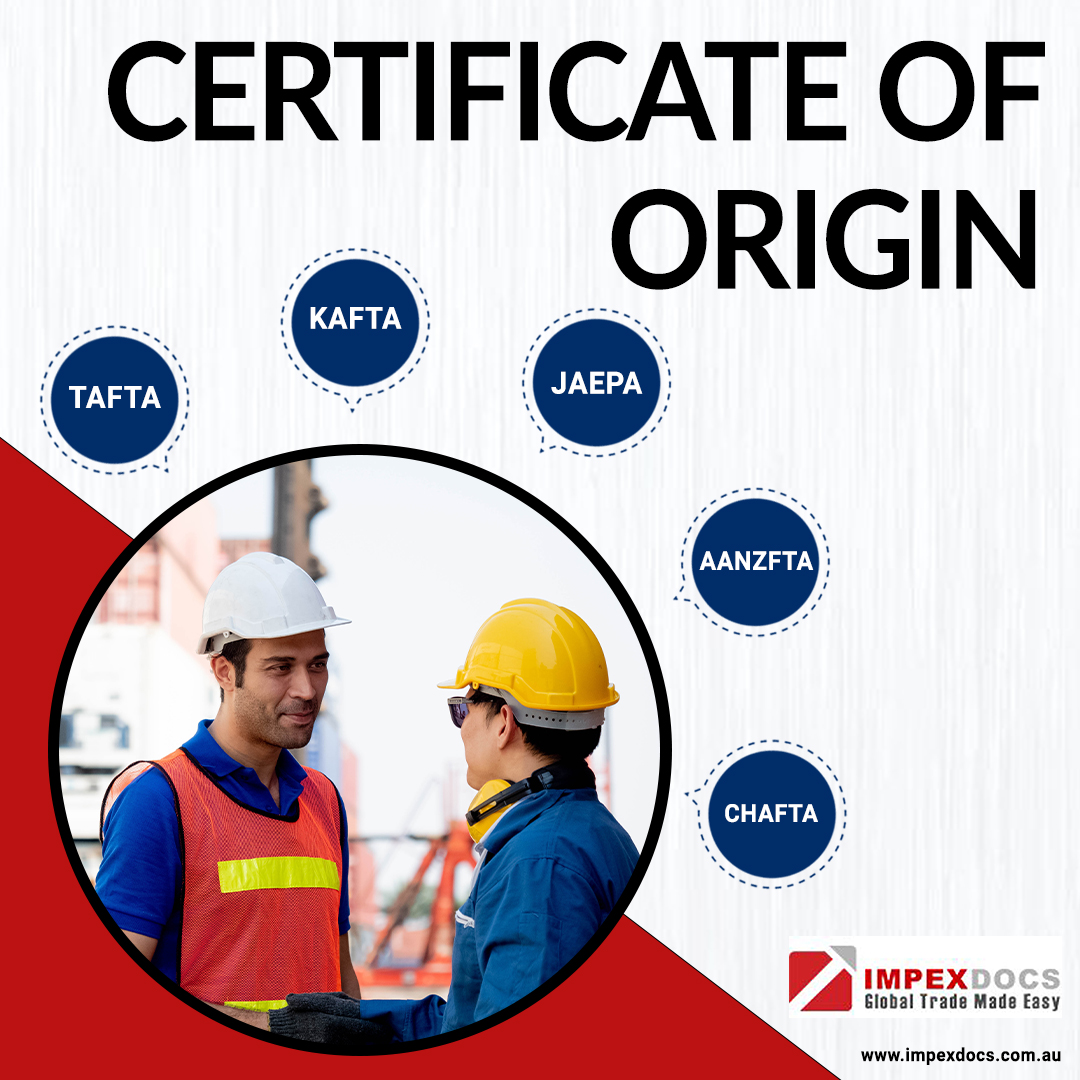
17 Dec
Australia being a leading exporting nation has trade relationships with many countries across the globe. In order to nurture these relationships, the country is a part of numerous Free Trade Agreements (FTAs) to offer benefits both to the importers and the exporters. So, an exporter from Australia, willing to export goods to an importer from an FTA partner country, must produce an important piece of document. Knows as certificate of origin, it validates the origination of a good entitled to receive preferential tariffs under one or the other FTA.
However, that is not the only purpose an origin certificate serves. The document is important for custom clearance as well as to meet the trade finance conditions from a lending bank. In short, your export documentation may be incomplete if you don’t produce this certificate in its correct form.
Who Prepares a Certificate of Origin?
As an exporter, you need to prepare the certificate of origin. After this, you must submit it to one of the authorized bodies for stamping. Basically, there are two main types of these certificates:
- Preferential: In simple words, you need a preferential certificate of origin if you goods are eligible for the reduced tariffs under one of the FTAs.
- Non-preferential: Alternatively, you would need this certificate if you simply need it for the purposes like custom clearance and others.
Be careful while preparing a certificate as any error or wrong information may lead to rejection. For example, an origin certificate is never handwritten, but you must type it. It should contain accurate information regarding your export business and the goods that you are exporting.
Who Stamps a Certificate of Origin?
The Australian Government authorizes the Australian Chamber of Commerce and Industry (ACCI) to approve and stamp the certificates of origin. The ACCI further has chambers of commerce across different states and regions of Australia to make this task easier. So, an exporter must submit the certificate for stamping to the chamber located in his or her region only.
To clarify, here is a quick list of various chambers and their locations:
- New South Wales – NSW Business Chamber (also known as Australian Business Consulting and Solutions)
- Northern Territory – Chamber of Commerce NT
- Victoria – Victorian Chamber of Commerce and Industry
- Queensland – Queensland Chamber of Commerce and Industry
- South Australia – Business SA
- Western Australia – Chamber of Commerce and Industry of Western Australia. Besides, the Freemantle Chamber of Commerce and Industry and the Bunbury Geographe Chamber of Commerce & Industry too have the authorization for the same in the region. However, the later can issue only the non-preferential type of certificate of origin.
- Tasmania – Tasmanian Chamber of Commerce & Industry
- Australian Capital Territory – Canberra Business Chamber
In addition, the Australian Arab Chamber of Commerce and Industry has the authorization to stamp these certificates in the following regions:
- Victoria
- Queensland
- New South Wales
- South Australia
Apart from the ACCI, another authorized body to issue certificate of origin is the Australian Industry group. It is also worth mentioning that Wine Australia can issue certificate of origin and other similar documents (like VI-1 Document) for the export of wine to different foreign markets.
Know the Importers’ Requirements
Before you prepare and submit a certificate for stamping, make sure you understand the exact needs of importers and their countries. For example, an AANZFTA certificate of origin (for exporting to New Zealand and ASEAN countries) may differ from a JAEPA certificate of origin (for exporting to Japan).
You can avoid mistakes by referring to the FTA guides that are available online. The official websites of various chambers can also be of help.


